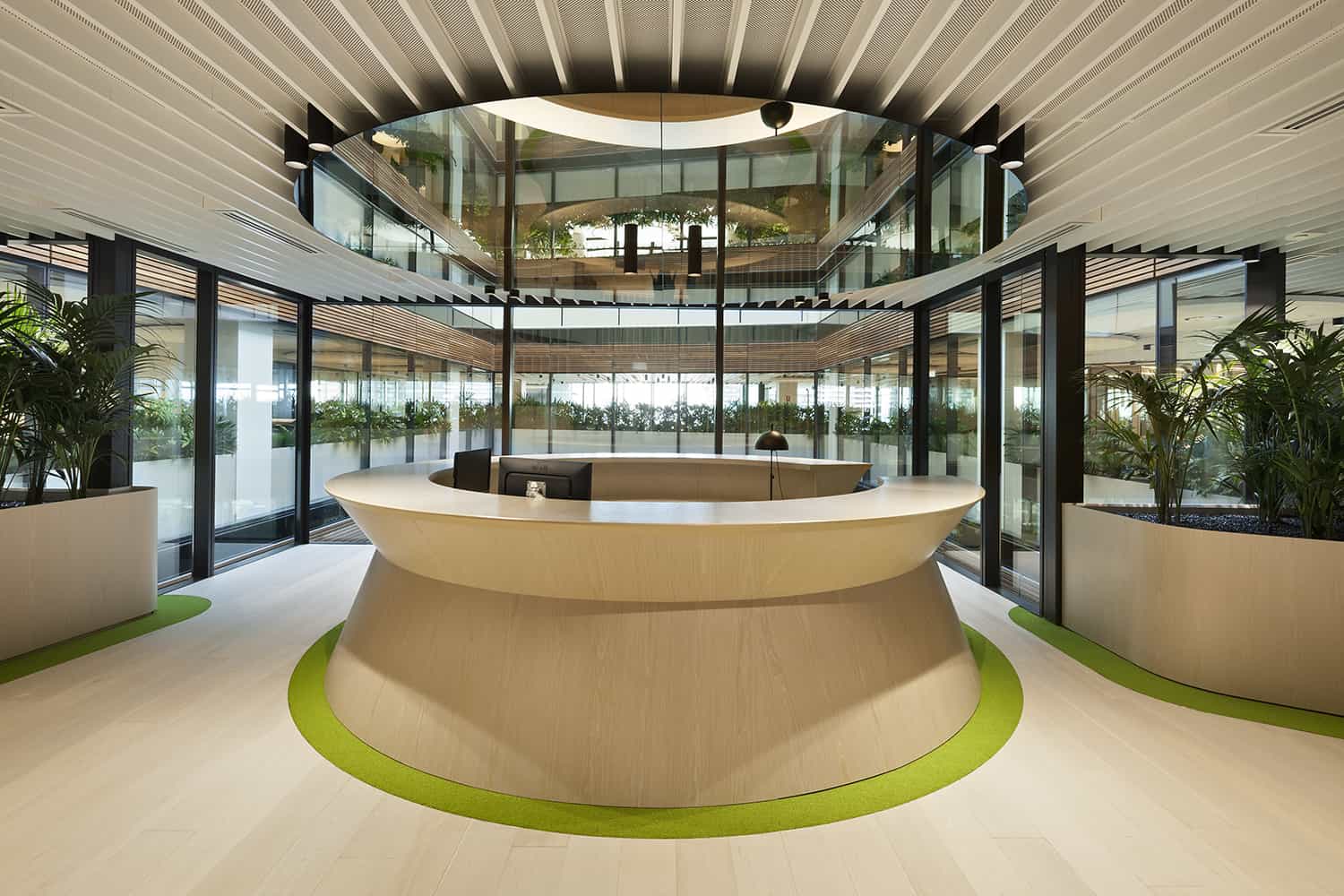Admittedly, my opinions of the Northwest Corner building at first were not exactly the best; this is not what I would expect from Rafael Moneo who is well known for his handling with such aplomb of the brick and stone materials that he won the 1996 Pritzker Prize for. The campus buildings bordering this new structure at the Morningside Campus are crafted in brick, with Moneo being a specialist in the same material, one would expect that he continues this same architecture because at first this high-tech building looks like it came right out of Norman Foster’s desk. However, after examining the building further, I realized that just because it doesn’t fit my expectations doesn’t mean it’s not a good building.
The Northwest Corner building was designed for Columbia University as an expansion to accommodate more research facilities for the University’s increasing need for additional structures to be used by students and staff from the science courses. The architect in charge of the project, Rafael Moneo, worked in collaboration with his daughter and son-in-law at Moneo Brock Studio to design what has come to be referred to as a hinge between Columbia University’s past, and future. Davis Brody Bond Architects and Planners were associate architects for this project, which students have come to refer to as the “heat sink” due to the amount of sun-inflicted heat entering the classrooms from its South facing windows.
The building was cantilevered over an already existing gymnasium on a part of the site that still remained unconstructed from the 1897 masterplan designed by Charles Follen McKim of McKim, Mead & White. This site was supposed to be a vacant lot. Nevertheless, with many years of staying vacant, it had found a new purpose, housing the Francis S. Levien Gymnasium 2,760-seat arena. The arena was now an in-house name with the university’s basketball teams, serving as a rainy-day location for commencement ceremonies and the architects had to work around it. The architects had to build upwards of the existing structure without penetrating it in any way, a major challenge for the project.
The architects consulted and worked closely with international engineering firm Arup, to design a giant steel truss from which spaces in the base are hung. The spaces on said base would be a library, a café, and a 170-seat lecture hall. This decision spelt further challenges for the facades, but the architects integrated a diagonal bracing using aluminum fins and façade panels to create an interesting façade despite the difficulties.
The structural system by the structural engineers from Arup also met requirements for 12-metre clear spans in the laboratories and auditorium while the stiff laboratories used diagonal cross-bracing at the perimeter. According to architect Rafael Moneo, the boldest expression of the structural elements was given to the library, which was located between the roof of the gym below and the mass of the building overhead, yet made completely free of any columns within its space.
The building houses faculty offices, classrooms, and research facilities for the disciplines of chemistry, biology, engineering and physics. The client wanted a building that would allow students and staff from its multi-disciplinary science department to easily interact dubbing the new project as both an intellectual and physical bridge.
The award-winning building connects to the older chemistry and physics buildings via glazed bridges. In order to prevent additional loading of the older buildings, the bridges have been cantilevered from the new Northwest Corner building.
The 14-story project boards 6,500 square metres of new lab space by providing 21 new labs on seven floors. The remaining floors also house a new science library that is expected to free up-to 2,790 square metres in four other buildings within the campus. The double-height science labs admit a lot of light to illuminate the mezzanine floors that contain faculty offices and semiprivate student workstations. Gathering spaces were placed at numerous locations in the labs to enable students from various disciplines to interact while encouraging sharing and exchange of information.
The auditorium and library in particular are two spaces with extremely beautiful interior decorations. With the wood furnishing and natural daylight reaching the spaces, undoubted warmth from the wood-laden interiors complement the two spaces assuredly bringing back ‘the Moneo’ in a structure that seems out of place in his portfolio.
Columbia University is in the process of building a new campus a few blocks north of the Northwest Corner building. The new 17-acre West Harlem campus brought with it a lot of conflict with residents as to how the land was acquired. Most of the residents are also negative critics of Rafael Moneo’s new structure claiming it ruins the street character of the campus and the town. With the new building not managing to heal the two parties, one can only anticipate what the 17-acre campus will do. However, for now, the Northwest Corner building will act as a link between the old Columbia University Campus and its planned new one.
Project Information
Architects: Rafael Moneo, Moneo Brock Studio
Associate Architects: Davis Brody Bond Architects & Planners
Lead Architect: Rafael Moneo
Structural & Mechanical Engineers: Arup
Client: Columbia University
Location: New York, USA
GFA: 17,465 sqm
Completed: 2010
Photography: Huanhai Cheng, Carlos Afonso, NewNewYork2010, Karen S. Mata Ortas, Carly Dean, Michael Moran Studio













